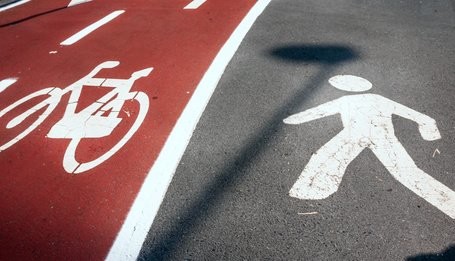
A new take on mixed mode traffic data collection that I thought you'd be interested in
Over the past few weeks I've had several conversations regarding advances in AI, IoT, and analytics in the context of urban transportation and smart cities, and thought that there might be some renewed interest in this post. Enjoy!
While at Cubic I worked to find ways to use advanced analytics to understand the impact of pedestrians, cyclists, drivers and passengers on public transport use, road congestion and economic activity. The goal was to be able to manage intersection activity so that all road, sidewalk and cycle path users could share these mobility assets in safer, cheaper, faster and smarter ways.
The problem was not the lack of data. It was collecting relevant and accurate mixed traffic active transportation data from multiple sources that could be used to create reliable and useful inferences for planning, investment, safety, signal management and reporting.
I thought that you might be interested in this short presentation on Making Mixed Mode Traffic Collection Easier. It has been designed to address elements on this topic that you may already be aware of as well as hopefully introduce some new concepts that you may find worthy of further exploration.
Slide summary:
- 2-5: The goals and challenges associated with gathering appropriate, reliable, actionable data across multiple modes in order to build more accessible, safe and efficient transportation networks.
- 6: A visual depiction of the active transportation monitoring environment and tools to understand it.
- 7: The lost opportunity, costs, and risks associated with a disjointed active transportation monitoring and data collection strategy.
- 8: A new approach to collecting and using active transportation data to improve transportation network performance, safety and efficiency.
- 9-10: RoadSys’ suite of integrated mixed traffic real-time monitoring and reporting tools and example deployment.
- 11-12: Case study examples.
- 13: Contact details and on-line references of interest.
If some element of the material covered here speaks to you please share this post and reach out to Dennis LeBlanc at 480-289-0081 or dennis@roadsysllc.com to learn more.

Owner, K2 Commercial Finance
6yProper assimilation of such data would be huge in terms of public safety, faster commutes, better targeted infrastructure spending, etc. & would have far ranging benefits.
Head of Business Development and Bid Management presso MOVYON
7yInteresting
Senior Account Executive, Agile Assets a Trimble Company
7yPhil, a very precise presentation that talks about a problem you and I and others have wrestled with around the world. Even in a city that wants to solve these problems, the IOT end of this type of pursuit still leaves a lot of room for improvement. It's getting there though, as your last few slides imply.
Lead Systems Engineer at Connected Places Catapult
7yA key challenge for multi modal data is it is all too easy to miss particular traffic doing odd things and slipping through the gaps in sensors placed in fixed positions, e.g. cycles cycling in the traffic lanes rather than in the cycle lane. As this can often be exactly the data that the engineer/planner needs to take notice of - e.g. vehicles parked in cycle lane, overcrowded cycle lane. I am wondering what the latest advances in video counting are as this appears to be the way forward, there are now often high resolution cameras covering the required areas in city centres, clever enough software could pick up and classify all the traffic data and realtime this to common database, the data can conveniently be cross referenced against the video feed for validation, and there is no need to install and maintain equipment in the carriageway surface.
Founder / Inventor Qvision - 3 Patents Granted, Founder Emeritus Project Mexico, Founder St. Innocent Orthodox Orphanage
7yPhil the concept seems clear. The issue as always is getting those who hold the purse strings to take the long view. The assessment of the cost of "not fixing it" is something that is a very tough sell even though it is spot on. It requires a visionary in management/leadership to understand the complex association of all the parts and the whole. But don't give up, these efforts are going to be part of bringing some order and flow back to cities.